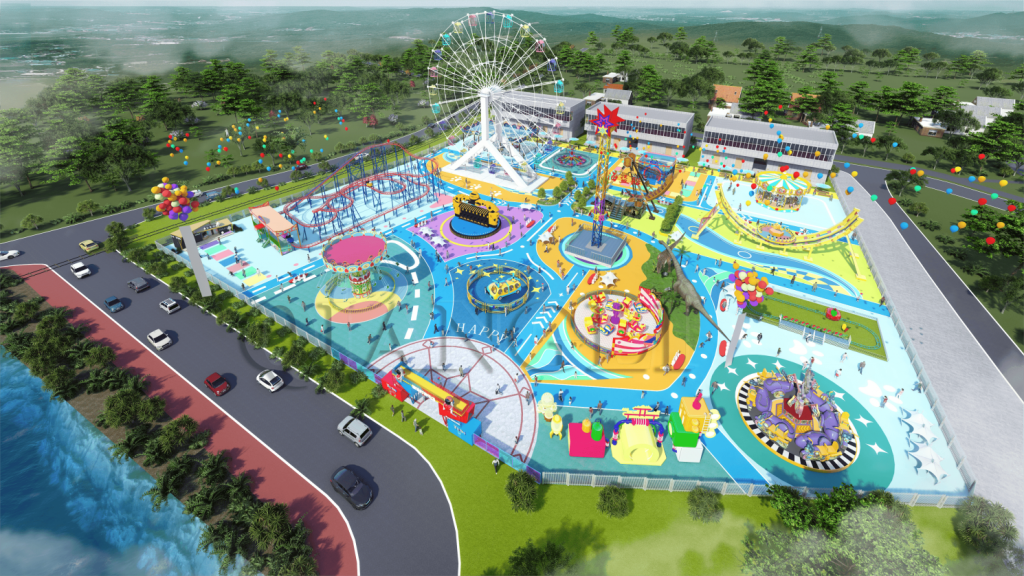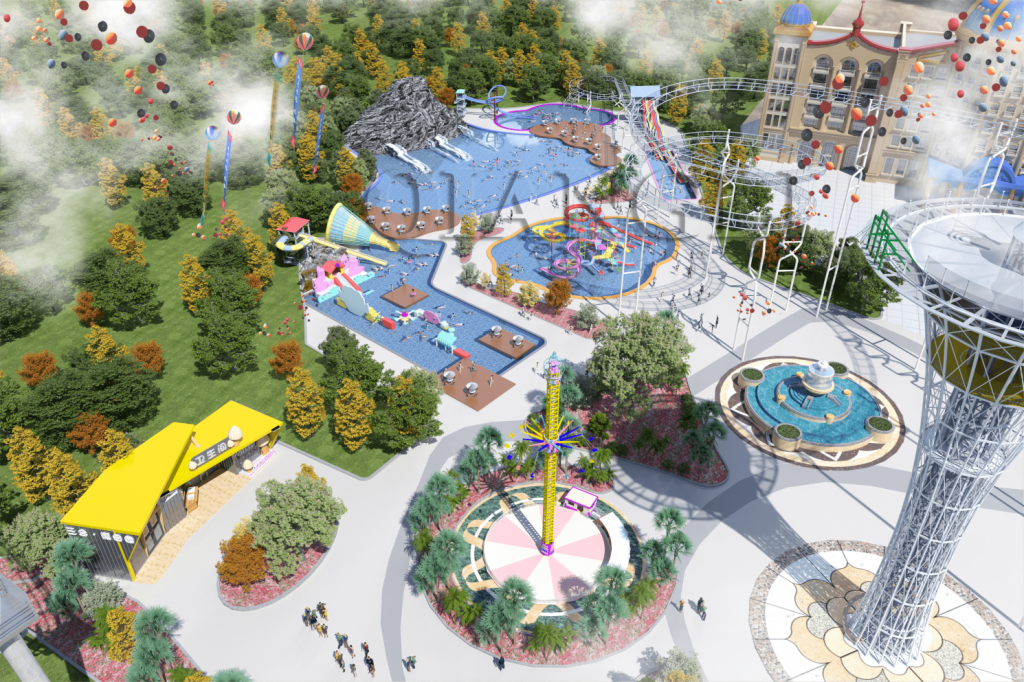Many investors or scenic area managers often ask: “I have a piece of land and want to build an amusement park—where should I start?”
This question may seem simple, but it actually determines whether the project will succeed. Planning an amusement park is not just about “buying a few rides”—it’s a systematic business endeavor.
1. Start with the land, not the equipment
The first step is site assessment.
- Topography and landscape: Flat land, sloped terrain, water bodies, or forested areas all influence what types of rides and themes are suitable.
- Transportation and market access: Driving distance to urban centers, proximity to highway exits, surrounding population size, and seasonal visitor patterns.
- Competitive landscape: Are there similar amusement parks within a 50-kilometer radius? What will differentiate your offering?
Only after thoroughly evaluating these factors can you determine whether the project is viable, what type of park to build, and what scale it should be.
2. Define the positioning—knowing who it’s for determines how it plays
Many amusement parks fail due to unclear positioning.
- If targeting families and children, prioritize mildly thrilling, interactive attractions.
- For teenagers or tourists, large-scale mechanical rides—such as roller coasters, giant swings, drop towers, and spinning towers—are essential. These high-thrill rides generate strong word-of-mouth and serve as primary crowd-pullers.
- If the park is part of a larger scenic attraction, emphasize the integration of “experience and scenery,” allowing rides to coexist harmoniously with the natural environment.
In short: clear positioning provides direction for planning.

3. Master planning—ensuring scientific feasibility from the outset
After confirming the site conditions and target market, the next phase is master planning. A scientifically sound amusement park plan should include at least the following elements:
- Functional zoning: Entrance plaza, main ride zone, rest areas, and commercial support facilities.
- Visitor flow design: A natural progression from entry to exit, avoiding congestion or underutilized “cold zones.”
- Ride mix: A balanced combination of core thrill rides (e.g., large roller coasters), family-friendly attractions, and interactive experiences.
- Landscape and atmosphere: Surrounding landscaping, lighting, and music around dynamic rides significantly impact overall guest experience.
This stage should ideally be handled by an experienced planning team, as it directly affects long-term operations and safety.
4. Ride selection—balancing appeal and safety
Rides are the soul of an amusement park. For medium to large-scale projects, key considerations include:
- Thrill level: Include signature attractions that create a “flagship effect” and become iconic.
- Operational reliability: Choose mature, nationally certified safe equipment.
- Maintainability: Ensure ease of maintenance and availability of spare parts.
- Ride combination: A well-structured mix creates rhythm in the guest experience, encouraging repeat visits.
Professional manufacturers can provide customized ride packages and visual renderings to help optimize configuration within budget constraints.
5. Investment feasibility analysis—making returns visible
Conduct a preliminary return-on-investment (ROI) analysis:
- Construction costs (rides, infrastructure, landscaping, supporting facilities)
- Estimated daily attendance and per-capita spending
- Annual operating cycle (accounting for peak and off-peak seasons)
- Payback period and annual rate of return
While estimates are inherently approximate, they help investors assess whether the project scale is realistic, avoiding both over-investment and underdevelopment.

6. Operations planning—great design needs great management
Building the park is just the beginning; operations determine success or failure.
- Launch marketing: Leverage “star attractions” to create buzz and attract initial visitors.
- Seasonal events: Regularly refresh experiences to maintain visitor interest.
- Safety and service: These are critical to reputation and must never be compromised.
Good planning isn’t about making the park look lively—it’s about creating sustainable, long-term cash flow.
If you have a vacant plot and are considering building an amusement park, the first step isn’t shopping for rides. Instead, engage a professional team to assess your land, define market positioning, and develop a comprehensive plan. Only through scientific planning and rational layout from the very beginning can your investment evolve into a profitable, enduring enterprise.
